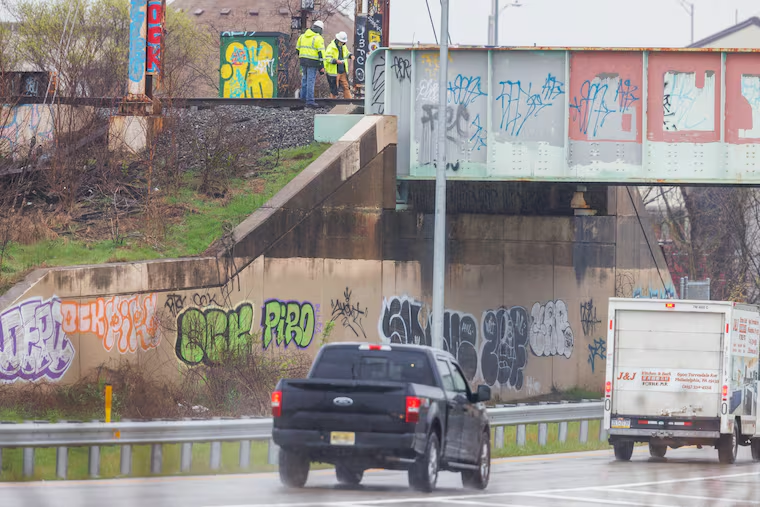Mayor Parker: PennDot approved the route that led to the I-95 bridge strike in Philly
While Philadelphia police escorted the over-sized truck, PennDot approved the route, Mayor Parker said. PennDot said it was the trucking company's responsibility to clear the bridge.

Mayor Cherelle L. Parker said Wednesday that Pennsylvania Department of Transportation officials approved the route an oversize tractor-trailer was traveling when it struck a railroad bridge, causing the northbound lanes of I-95 in Port Richmond to close for days.
Philadelphia police were escorting the truck as it hauled a mysterious (and massive) steel cylinder along the interstate Monday afternoon, Parker said, but she maintained the state transportation agency was responsible for making sure the vehicle could fit under bridges along its route.
“To do this, police need to be in possession of a properly permitted and approved route plan that we get from PennDot, and I want to affirm that they were,” Parker said, speaking after a bill-signing at City Hall. “So what happened? Clearly, there was some type of discrepancy between the height of the truck and the clearance of the bridge … But the PPD did their job.”
In turn, state transportation officials said it was the responsibility of the trucking company to ensure that its load could safely pass under bridges.
“The applicant is responsible for verifying the load parameters and adjusting their permit application based on those factors,” wrote PennDot spokesperson Alexis Campbell by email. ”Pre-trip verifications driving the proposed route with an extended pole to measure clearances and escort services 1 to 3,000 feet in front of a load, again with an extended pole, while moving, are required for certain types of load, including the load that resulted in this bridge strike.”
The truck’s cargo struck the underside of a Conrail bridge that carries tracks over I-95 about 1:30 p.m. Monday. A section of the roadway at Exit 26, near the Betsy Ross Bridge, has been shut since as the railroad’s contractors work to repair the bridge.
PennDot has said that the structure should be repaired by the weekend, but officials acknowledge heavy rainstorms over the last two days could cause delays in finishing. A Conrail official has said the work could be completed as early as Thursday.
State and city regulations require special route planning and permits for oversize cargo traveling through the city. Escort vehicles, usually law enforcement, must accompany vehicles of a certain size or sometimes with other risk factors such as hazardous cargo.
It was not clear where the truck was headed, where it originated, or what exactly the cargo was. It resembled a gigantic, rusted, pasta tube.
A PennDot spokesperson said the Philadelphia Police Department’s Crash Investigation Division is handling the inquiry into the incident — and city police have declined to provide even rudimentary information, such as the company that owned the carrier that struck the bridge.
It was the second bridge strike in nine months on I-95 in Philadelphia. In June, a gasoline tanker truck crashed and burned under the interstate at Cottman Avenue, closing the highway for two weeks until a temporary bridge was put in place. Full reconstruction of a permanent bridge is scheduled for this year.
An Inquirer analysis of PennDot crash data found that there are typically 600 to 700 crashes involving commercial vehicles each year in Philadelphia. This number has crept up since 2020 — along with the increasing popularity of delivery services like Amazon. However, crashes involving commercial vehicles represent a tiny share of all crashes — typically 6 to 7%. Incidents involving major infrastructure, like bridges, are much rarer, accounting for less than 10 incidents in any given year.
Staff writer Aseem Shukla contributed to this article.